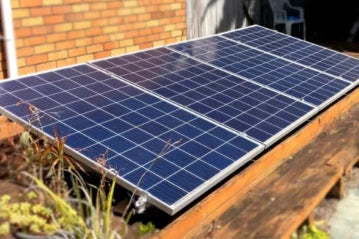
In today's ever-evolving world of renewable energy, solar power systems have gained immense popularity as a clean and sustainable energy source. When setting up a solar power system, understanding the role of different components becomes crucial. Two such components are the charge controller and the inverter charger. In this blog post, we will explore the relationship between these devices and answer the question: Do I need a charge controller if I have an inverter charger?
Understanding the Role of a Charge Controller
To comprehend the necessity of a charge controller with an inverter charger, it is essential to understand the purpose of a charge controller itself. A charge controller is a vital component in a solar power system that regulates and optimizes battery charging. Its primary function is to prevent overcharging and protect the battery from damage. By monitoring the battery voltage and adjusting the charging current accordingly, a charge controller ensures the battery's longevity and performance.
There are different types of charge controllers available in the market, including Pulse Width Modulation (PWM) and Maximum Power Point Tracking (MPPT) charge controllers. PWM charge controllers are more affordable and suitable for small-scale systems. On the other hand, MPPT charge controllers are known for their higher efficiency and better performance in larger systems with higher power demands.
Inverter Charger vs. Charge Controller
Now that we have a clear understanding of charge controllers, let's compare them with inverter chargers. An inverter charger is a device that combines the functionalities of an inverter and a battery charger into a single unit. Its primary role is to convert the direct current (DC) electricity generated by solar panels into alternating current (AC) electricity, which is suitable for powering household appliances. Additionally, an inverter charger can charge the battery bank when connected to an external power source, such as a generator or the grid.
While an inverter charger and a charge controller have some overlapping functionalities, they serve different purposes within a solar power system. The inverter charger focuses on converting and supplying power, whereas the charge controller concentrates on battery charging optimization. In simpler terms, the inverter charger manages the AC side of the system, while the charge controller takes care of the DC side.
Scenario-Based Analysis
To determine if a charge controller is necessary when using an inverter charger, we need to consider various scenarios. In small-scale systems with low power demands, such as a small cabin or a remote communication station, where the solar panel array is directly connected to the battery bank, an inverter charger can handle both the charging and inverting functions without the need for a separate charge controller. The built-in charge controller within the inverter charger can regulate the charging process effectively.
However, in medium to large-scale systems with higher power demands, it is advisable to incorporate a separate charge controller. These systems typically have larger solar panel arrays and battery banks, requiring a more advanced and efficient charge controller, such as an MPPT charge controller. The charge controller, in conjunction with the inverter charger, ensures optimal battery charging and system performance.
Factors to Consider When Deciding on a Charge Controller
When determining the need for a charge controller with an inverter charger, several factors come into play. These include:
1. Battery Bank Capacity and Voltage Requirements: The size and capacity of the battery bank influence the type and specifications of the charge controller required.
2. Solar Panel Specifications: Different charge controllers have different compatibility requirements with solar panels. It is crucial to ensure that the charge controller can effectively handle the output of the solar panel array.
3. Power Consumption and Load Requirements: The power consumption of your appliances and the load requirements of your system determine the charging and inverting capabilities needed. It is essential to select a charge controller and inverter charger combination that can handle your specific power demands.
4. Efficiency and Cost Considerations: While MPPT charge controllers are more efficient and can harvest more power from the solar panels, they are also more expensive compared to PWM charge controllers. Balancing efficiency and cost is crucial when choosing the right charge controller for your system.
Conclusion
In conclusion, the need for a charge controller with an inverter charger depends on the scale and power demands of your solar power system. While an inverter charger combines the functionalities of an inverter and a battery charger, it may not always be sufficient to optimize battery charging and protect your battery bank from damage. Small-scale systems with low power demands may not require a separate charge controller, as the inverter charger can handle both functions. However, medium to large-scale systems with higher power demands would benefit from incorporating a separate charge controller to ensure efficient battery charging.
It is essential to consider factors such as battery bank capacity, solar panel specifications, power consumption, and cost when making the decision. Consulting with professionals or experts in the field can provide personalized advice tailored to your specific requirements.
Remember, when setting up a solar power system, each component plays a crucial role in its overall efficiency and performance. By understanding the functions and requirements of charge controllers and inverter chargers, you can make informed decisions to optimize your solar power system and harness the full potential of renewable energy.

0 comments